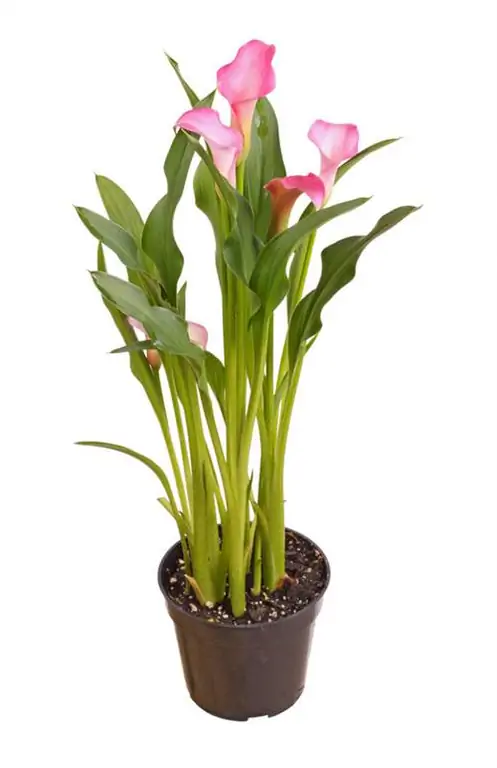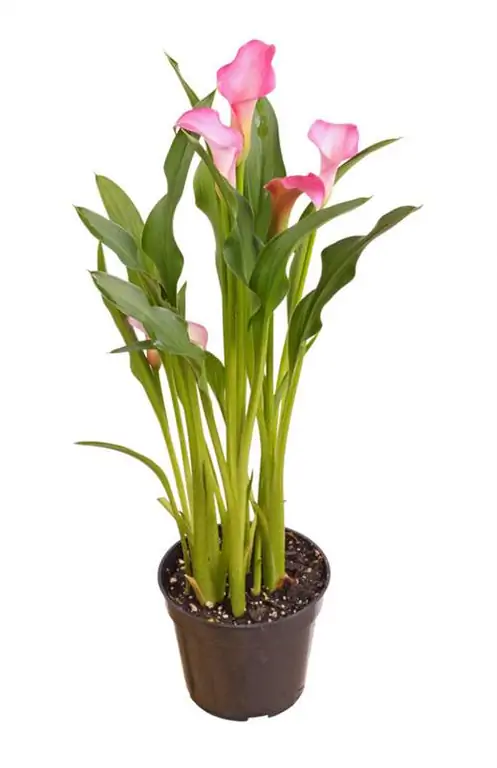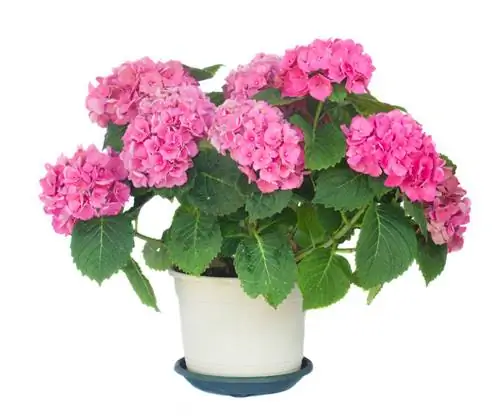- Author admin [email protected].
- Public 2023-12-16 16:46.
- Last modified 2025-01-23 11:20.
The indoor calla, often spelled indoor calla, is one of the most beautiful, but not easy to care for house plants. Only if the location and care are right will the calla delight flower lovers with its decorative flowers for many years.

How to properly care for a calla houseplant?
The indoor calla is a demanding houseplant that needs a lot of light but cannot tolerate direct sun. During the flowering period it should be kept moist, fertilized and sprayed regularly. After flowering there is a rest period with reduced watering and fertilization.
The right location for the indoor calla
Room calla needs a lot of light, but does not tolerate direct sunlight. In the flower window she therefore needs some sun protection during midday.
It's even better if you put the plant in a bucket or pot on the terrace over the summer. But make sure that it doesn't get too much blazing sun and is somewhat sheltered from the wind.
Room calla in the flower window is often plagued by spider mites and aphids. Watch the houseplants carefully so that you can take countermeasures in time.
Flowering plant with demands
- Keep moist during flowering
- Spray with water once a week
- Fertilize regularly
- Cut off what has faded and dried out
- Let it dry out after flowering
- Overwinter in a pot or as a flower bulb
You need a bit of sensitivity when watering the indoor calla lilies. The soil must never dry out, especially during the flowering period. Regular fertilizer applications provide the plant with enough nutrients. But there shouldn't be too much fertilizer.
During the rest period after flowering, the calla may no longer be watered or fertilized. It is then placed cooler and from January onwards it gets used to warmer temperatures and humidity again.
Zimmerkalla reacts very sensitively to germs and bacteria in the plant soil. You should therefore repot the houseplants in fresh potting soil every spring.
During the break, the houseplants gather new strength
In its homeland in South Africa, the calla grows in a location that is very moist when it is flowering but very dry when it is resting.
In order for the indoor calla to thrive properly, it is important to replicate this change.
The flowering period must be followed by a rest period of at least ten weeks, preferably two months, in which the houseplants gather new strength.
Tips & Tricks
Callas don't just cut a fine figure as houseplants. The eye-catching bracts that surround the flower spadix also provide colorful accents in the garden in the flower bed. In winter, however, the tubers have to be kept indoors over the winter.






